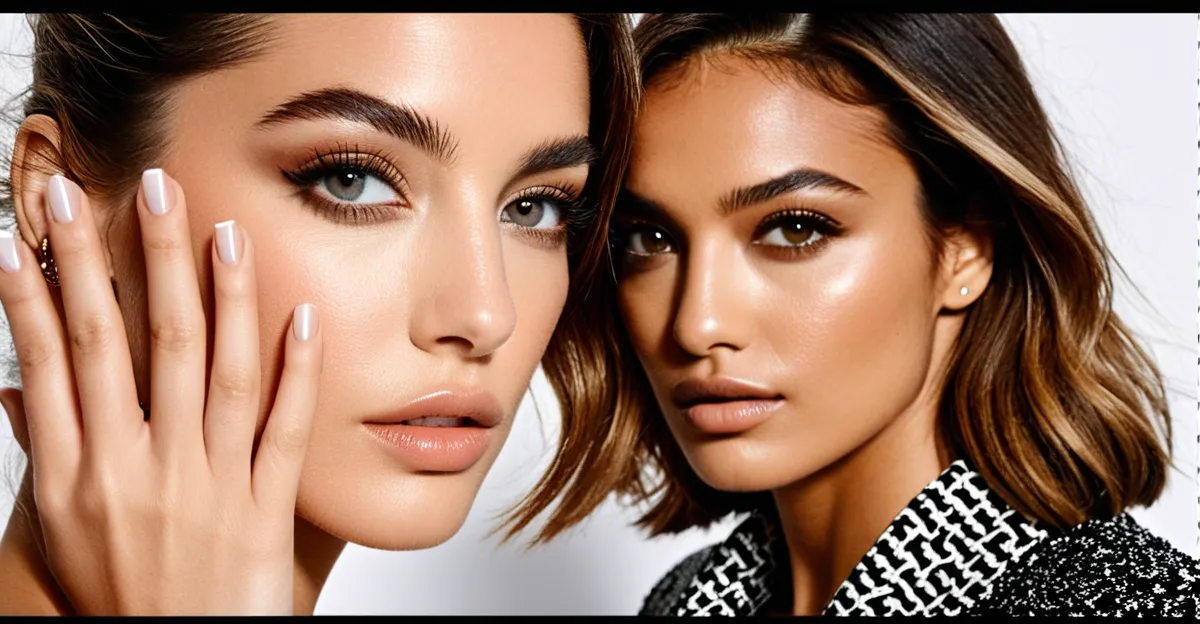The Impact of UK Fashion Trends on Women’s Representation in Media
UK fashion trends hold significant sway over women’s media presence, often serving as visual narratives that enhance visibility and representation. These trends do more than reflect style—they become a medium through which women’s perspectives gain prominence in popular culture. For instance, the rise of streetwear and sustainable fashion in the UK has spotlighted diverse female voices, encouraging authenticity and self-expression.
Fashion influences women’s media presence by symbolizing empowerment and individuality. When women adopt bold UK fashion trends, they not only shape their personal image but also invite media attention that amplifies female narratives. This interplay between style and media creates a dynamic platform where women’s experiences and viewpoints are both celebrated and scrutinized.
This might interest you : Exploring the evolution of the uk fashion scene: adapting to women’s shifting trends
Prominent UK fashion movements, such as the punk revival and contemporary ethical designs, have actively contributed to reshaping female narratives in media. These trends challenge traditional stereotypes and allow women to assert control over how their stories are told. Ultimately, the impact of UK fashion trends on women’s media presence is a powerful testament to the interplay between aesthetics and cultural identity.
The Impact of UK Fashion Trends on Women’s Representation in Media
UK fashion trends have long played a pivotal role in enhancing women’s media presence by shaping how femininity and empowerment are visually communicated. These trends do more than set aesthetic standards; they serve as a medium that reflects and amplifies women’s perspectives in popular culture. For example, the rise of bold, statement-making styles characteristic of UK streetwear signals confidence and autonomy, which translates into stronger, more visible female narratives in media outlets.
Also to read : The impact of eco-friendly fashion on women’s clothing trends in the uk
Fashion choices tied to these UK trends influence women’s media presence by challenging traditional portrayals and encouraging diverse, authentic representations. This dynamic interaction between fashion influence on media and women’s stories creates a powerful platform where style acts as both a personal and political expression. Women adopting these trends gain visibility not just for their looks but for what they stand for in society.
Notable UK fashion movements, such as punk and contemporary sustainable fashion, have particularly shaped female narratives by combining aesthetic innovation with social messages. Through this, UK fashion trends continue to broaden the landscape of women’s representation in media, promoting empowerment and evolving societal understanding.
Female Designers and Icons Reshaping Media Narratives
Female designers in the UK have been pivotal in transforming women’s empowerment in media. Figures such as Stella McCartney have elevated women’s media presence by incorporating strong feminist messages into their collections. These designers do more than create clothes—they craft stories that challenge gender norms and inspire confidence. Their work gains considerable UK fashion trends attention, showing the powerful link between creative leadership and media representation.
Prominent UK fashion icons like Vivienne Westwood have also shaped public discourse through bold statements and unconventional style. By pushing boundaries, these icons highlight women’s strength and complexity, contributing to a more nuanced portrayal in both fashion and wider media. The media often spotlights these women, reinforcing their role as symbols of empowerment.
The impact of female designers and icons extends to influencing how women’s empowerment in media is portrayed. Their presence in the fashion industry increases coverage of female-driven narratives, encouraging more diverse and authentic stories that resonate across cultures. Thus, UK female designers and icons are central in reshaping media narratives through style and leadership.
Female Designers and Icons Reshaping Media Narratives
Female designers in the UK have significantly advanced women’s empowerment in media by crafting narratives that center on authenticity and strength. Designers like Vivienne Westwood and Stella McCartney have not only revolutionized UK fashion trends but also shaped how female empowerment is portrayed in media. Their collections often blend bold aesthetics with social commentary, making fashion a platform for female voices.
UK fashion icons exemplify this influence by embodying styles that challenge traditional gender norms and highlight individuality. These icons, through their public appearances and media coverage, amplify women’s media presence, reinforcing the connection between style and empowerment. Media portrayal of these figures celebrates leadership and innovation, framing fashion as a powerful tool for changing perceptions about women in society.
The synergy between UK female designers and fashion icons creates a dynamic narrative flow in media. This collaboration fosters visibility, allowing empowered women to shape public discourse. Women’s empowerment in media thrives when fashion leadership by UK female designers brings fresh perspectives and challenges entrenched stereotypes, further enriching the cultural landscape.
Media Coverage of Fashion as a Platform for Women’s Voices
Media coverage plays a critical role in amplifying women in media by focusing on fashion as a powerful platform for female expression. Fashion coverage brings female perspectives to the forefront by showcasing how style choices narrate personal and collective stories. Through features, editorials, and campaigns, fashion journalism elevates women’s stories, making their experiences more visible and relatable.
What role does fashion media play in advancing women’s voices? It acts as a bridge, connecting the creative expression of women with wider social conversations. Highlighting designers’ intentions and the cultural significance behind UK fashion trends, media platforms draw attention to issues like identity, empowerment, and inclusivity. This synergy between fashion journalism and women’s advocacy enriches public discourse and encourages support for diverse narratives.
Campaigns focusing on female-driven stories often use fashion as a means to challenge stereotypes and celebrate authenticity. By doing so, the media not only entertains but also educates audiences, fostering a deeper understanding of women’s realities. Thus, fashion coverage emerges as an essential channel to promote and celebrate female perspectives within the evolving landscape of media.
Media Coverage of Fashion as a Platform for Women’s Voices
Fashion coverage plays a crucial role in spotlighting women in media, serving as a platform that elevates female perspectives. Through dedicated reporting and analysis, fashion media highlights women’s stories, going beyond aesthetics to explore identity, empowerment, and cultural impact. This coverage creates a narrative space where women’s voices are amplified, allowing diverse experiences to gain recognition.
The synergy between fashion journalism and women’s advocacy strengthens this effect. Journalists and editors often collaborate with female designers, activists, and influencers to craft stories that resonate on multiple levels—personal, social, and political. This collaborative approach ensures that fashion coverage is not just style-focused but also a powerful channel for advocacy and change.
Media campaigns emphasizing female-driven narratives further exemplify this trend. These campaigns showcase empowered women, challenge stereotypes, and promote inclusivity. By weaving authentic stories with striking visuals, fashion media fosters a supportive environment for women’s voices to thrive, reinforcing the essential link between women in media and the broader cultural discourse.
The Impact of UK Fashion Trends on Women’s Representation in Media
UK fashion trends have consistently played a vital role in elevating women’s media presence by transforming style into a visual narrative that conveys empowerment. Prominent UK trends—such as punk revival, streetwear, and sustainable fashion—do more than establish aesthetics; they actively shape how women are portrayed in media. These trends highlight individuality and challenge traditional norms, giving women a platform where their perspectives resonate widely.
How do fashion choices reflect and amplify women’s views? They serve as expressive tools. When women adopt emerging UK fashion trends, their style becomes a statement that attracts media attention, increasing visibility for diverse female experiences. This amplification bridges personal identity with cultural dialogue, enabling women’s stories to occupy a larger space in popular culture.
Notable UK fashion movements have been particularly influential in shaping female narratives. For example, the punk movement’s rebellious spirit empowered women to reject stereotypes, while ethical fashion emphasizes authenticity and social responsibility. Together, these trends enhance fashion influence on media, advancing more nuanced and inclusive portrayals of women in public discourse.
The Impact of UK Fashion Trends on Women’s Representation in Media
UK fashion trends play a crucial role in shaping women’s media presence by visually expressing identity and empowerment. These trends act as a powerful medium where style choices reflect and amplify female perspectives within popular culture. How does fashion influence media visibility for women? By providing iconic imagery and narratives, UK fashion trends enable women to control their portrayal, challenging conventional stereotypes and promoting authenticity.
Notable UK fashion movements like punk and sustainable fashion have significantly shaped female narratives. Punk’s rebellious aesthetics communicate defiance and independence, while sustainable fashion emphasizes ethical values tied to female empowerment. Both movements foster diverse representations, highlighting women’s multidimensional identities.
Fashion choices within UK trends encourage media outlets to spotlight women not only for their appearance but for the stories underlying their style. This dynamic illustrates that fashion influence on media goes beyond aesthetics, acting as a prism through which women’s empowerment and societal roles are both celebrated and contested, reinforcing their prominent presence in cultural discourse.
The Impact of UK Fashion Trends on Women’s Representation in Media
UK fashion trends serve as a dynamic force in women’s media presence, amplifying female voices by turning style into cultural statements. Prominent trends—such as the punk revival, streetwear, and ethical fashion—do more than influence wardrobes; they actively reshape public perceptions of women. How do these trends enhance media visibility? By providing women with distinctive looks that symbolize empowerment and authenticity, these fashion choices attract media attention and spark wider conversations about identity.
Fashion influence on media operates through the narratives embedded in style. For example, the punk movement empowered women to express rebellion against societal norms, challenging traditional female roles portrayed in media. Similarly, sustainable UK fashion trends highlight responsibility and inclusivity, broadening narratives by emphasizing ethical values.
These trends reflect and amplify diverse female perspectives by allowing women to visually articulate their experiences and beliefs. The interplay between UK fashion trends and media creates a platform that not only celebrates aesthetics but also fosters women’s representation in popular culture, reinforcing their presence across multiple media channels.




